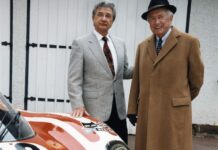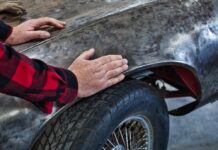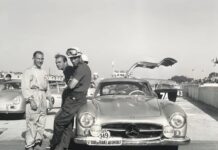The McLaren F1 GTR Longtail on display with chassis number # 22R belongs to the ROFGO Gulf Heritage Collection. Although developed from the ground up as a road car, it was inevitable that every fibre of the McLaren F1 was laced with racing DNA.

Having been assured several times that the car would not be track bound, designer Gordon Murray opted for comfort and practicality over raw performance in several crucial areas. Compromises were made, for example, to the size of the doors and the location and design of the suspension mounts. The result was a supercar that was not only as fast or even faster than its closest rivals but also more comfortable and practical. What was also almost inevitable, however, was that one of McLaren’s customers would want to take his F1 racing. This customer was Ray Bellm, an experienced amateur racer. At the time he raced a Porsche in the popular BPR series for production based GT cars. His initial request for a racing version of the F1 was not surprisingly met with a resounding no. When he subsequently suggested to his friend and McLaren CEO Ron Dennis that he would take it upon himself to convert the road car he had on order, Bellm did get a slightly more favourable response. McLaren would build him and him alone a racing version for the princely sum of 1 million pounds. This was well out of Bellm’s budget and Dennis eventually agreed to lower the prices if Bellm could find additional customers. He did not have to look beyond the list of future F1 road car owners to find them; German banker Dr. Thomas Bscher and l’Oreal CEO Lyndsay Owen-Jones. With three firm orders in place, Murray set about turning the F1 into a GT racer.
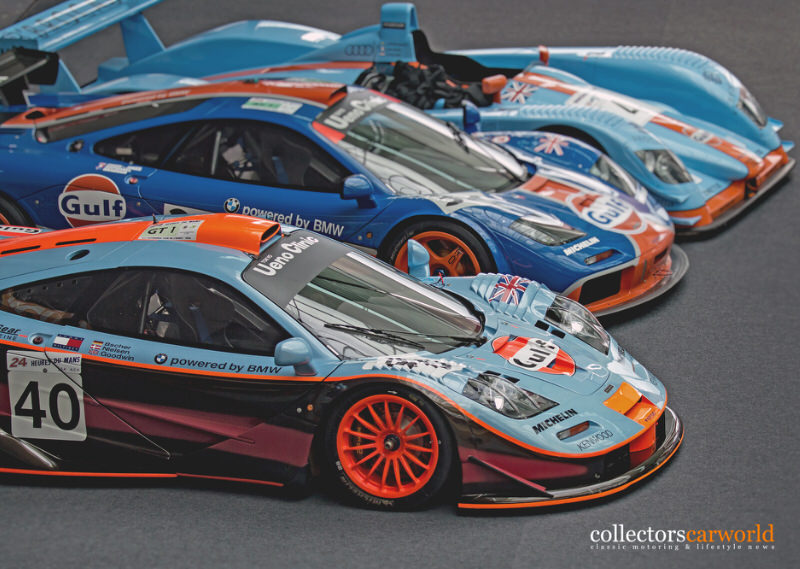
The new ‘F1 GTR’ was built to the international ‘GT1’ regulations, which meant it would also be eligible for the 24 Hours of Le Mans. To balance out the performance of the many different types of cars, these regulations included a mandatory engine intake restrictor. In the case of the McLaren, this meant the power of the BMW V12 was down by nearly 30 bhp, despite the absence of the catalytic converters. Murray managed to lower the cars weight by around 120 kg by stripping out the interior, including the two passenger seats. The right hand side of the cockpit was filled with additional electronics and switches needed for racing. All rubber bushes were removed from the suspension for additional stiffness. Only a single day of wind-tunnel testing was allocated to the project with a modest wing on the tail as the most noticeable result.
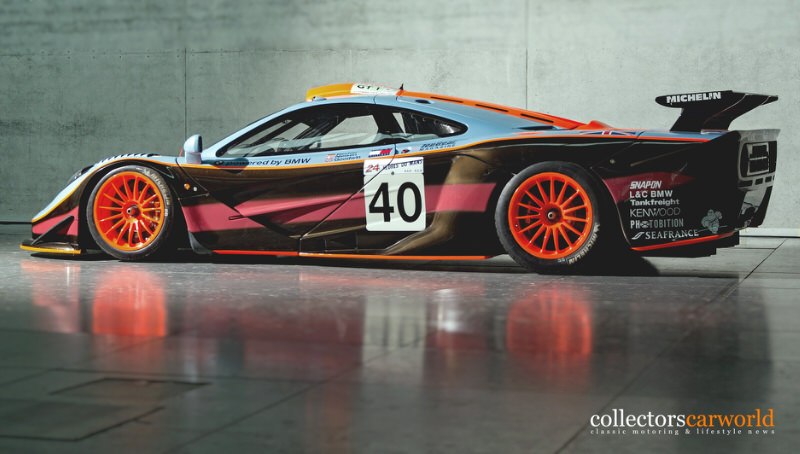
The brand new McLaren F1 GTRs set the three fastest times during qualifying at Jerez
Even before the first car was constructed two additional orders were placed. The five customer cars and a development prototype were built on tubs that had originally been destined for road car use. The Bellm and Owen-Jones GTRs were run by GTC Motorsport with backing from Gulf Oil in the UK. Veteran team manager David Price was responsible for the Bscher car, which was raced in West colours and the Harrods backed example provided by Moody Fayed. The fifth car was sold to a French privateer and was entered by BBA Competition. A sixth car was also on the books and headed to Swiss Enthusiast Jean-Denis Deletraz. Only the three cars for the original backers were ready for the BPR season opener at Jerez. The other three were delivered in the following weeks.
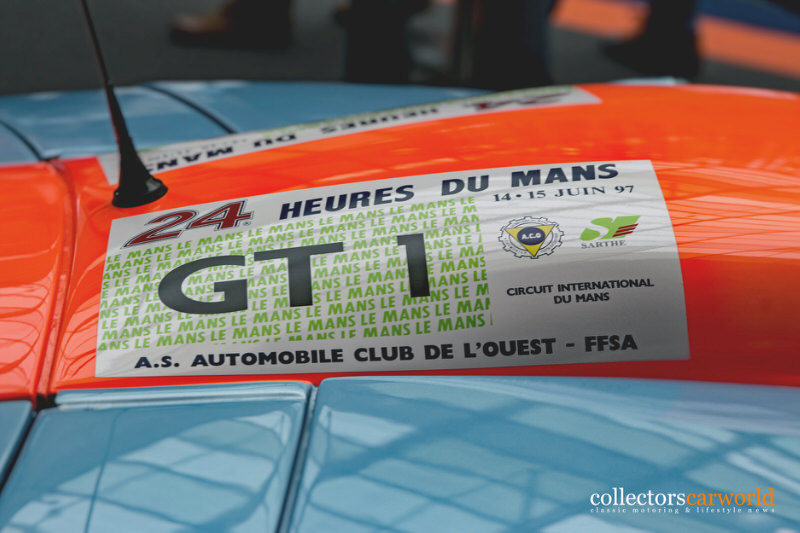
Easily the quickest car out there, the brand new F1 GTRs set the three fastest times during qualifying at Jerez. The race was not without problems and only the Bellm and Maurizio Sandro Sala example managed to make it to the finish. They did give the McLaren a victory at its debut against the latest Porsche 911 GT2s and the ferocious Ferrari F40 LMs. The F1 GTR would go on to dominate the BPR series, winning 10 of the 12 rounds. The teams decided to skip the Nogaro race altogether due to its proximity to the 24 Hours of Le Mans but on Anderstorp the car was actually beaten on merit by one of the Ferraris. With five victories Bellm and Sandro Sala dominated the season but consistency and two victories gave the title to Bscher and his co-driver John Nielsen.

Le Mans was a completely different story with purpose built prototype racing cars joining the fray. Over a single lap these were quite a bit quicker but that was somewhat compensated by the better fuel economy and the larger fuel tank of the GT1 cars. In addition to the six familiar F1 GTRs, a seventh example was entered under the Kokusai Kaihatsu Racing banner and run by Paul Lanzante. The chassis used was the original prototype, which was still owned by McLaren. This did not sit very well with the other teams as they were all promised equal support from the factory and now feared that the additional entry would be favoured. Signed to drive the seventh McLaren were Yannick Dalmas, Masanori Sekiya and J.J. Lehto.
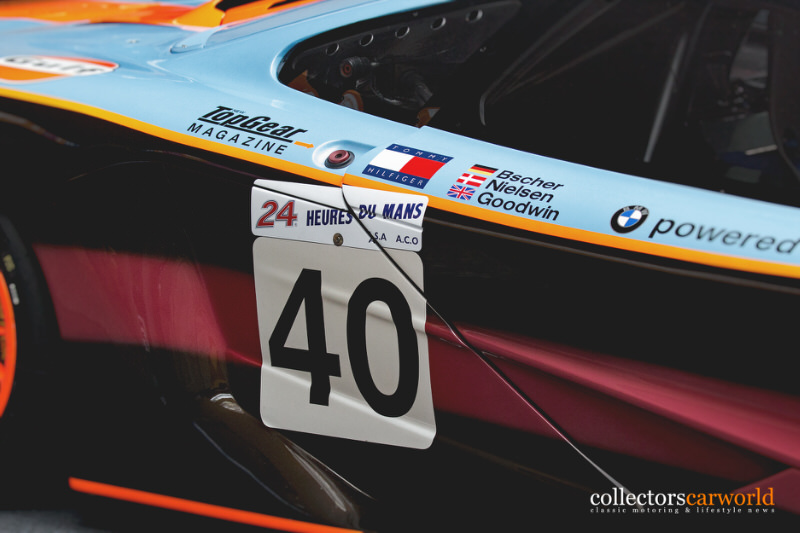
As expected the prototypes dominated qualifying with the fastest McLaren starting 9th on the grid. The race was run under torrential conditions, which all but neutralised the advantage the prototypes had over the GT1 cars. Of the seven McLarens entered, five held the top position at one point during the race. What finally made the difference was not so much the possible factory support but the brilliant drive of Lehto during the night. There were laps where he was 20 seconds faster than anybody else in the field. At the end of the 24-hour race, the Ueno Clinic liveried machine was one lap ahead of the second placed Courage prototype. The only other time a manufacturer had won at Le Mans at their first attempt was obviously during the first race and in 1948 when a Ferrari 166 MM took the much coveted victory. Four other McLarens had survived and they were placed 3rd, 4th, 5th and 13th.

McLaren allocated more time and funds to develop the F1 GTR further for 1996
Following a near perfect season, McLaren allocated more time and funds to develop the F1 GTR further for 1996. More weight was shed and the aerodynamics tweaked even further, while remaining close to the original design. The BMW engine was mounted slightly lower in the chassis to bring the centre of gravity down further. In an attempt to slow the McLarens down, tighter restrictors were mandated. BMW answered by tweaking the road car engine for the first time, which helped keep the power at around 600 bhp. A further nine chassis were constructed and two of the existing nine cars were updated to the latest specification. McLaren also added the ‘F1 LM’ to line-up, which was basically a road legal version of the original F1 GTR. With the restrictors removed, the V12 produced a hefty 680 bhp. Only five customer cars were built in honour of the five cars that reached the finish at Le Mans.

For the 1996 Le Mans, Porsche wheeled out a GT1 car of their own
McLaren’s success had not gone by unnoticed in Stuttgart and for the 1996 Le Mans, Porsche wheeled out a GT1 car of their own. It combined the front half of a Porsche 911 road car with a bespoke rear section. To meet with the homologation requirements, Porsche did offer a road legal version but it was obvious that the German manufacturer had built a racing car to compete in a production based class. Strictly speaking the new Porsche was legal but it was certainly not in the spirit of the rules. At Le Mans the new McLarens were classified 4th, 5th and 6th behind the two Porsche 911 GT1s and the Porsche powered TWR prototype that won the race outright. Three more F1 GTRs reached the finish in 8th, 9th and 11th, completing another remarkable achievement for the road car turned racer in the classic endurance race.
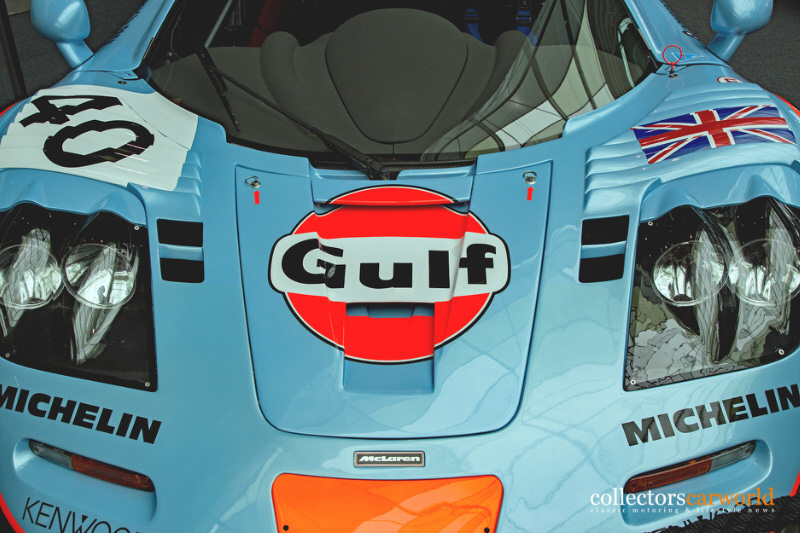
Porsche did not bother with the BPR series until the final rounds of the season, so the McLaren could continue its reign for most of the year. Now teamed with James Weaver, Bellm was again the most successful F1 GTR pilot. With their Gulf liveried machine the British pairing won four rounds, which this time was enough for the championship. When the works 911 GT1s did show up, they won three races out of three attempts. The writing was on the wall for the original McLaren F1 GTR and work was already on the way for a far more aerodynamically advanced version for 1997. Unlike its main rivals that year, the ‘Longtail’ McLaren still used a road car chassis, which did not prevent it from scoring additional victories in the newly established FIA GT Championship. It also won its class at Le Mans.
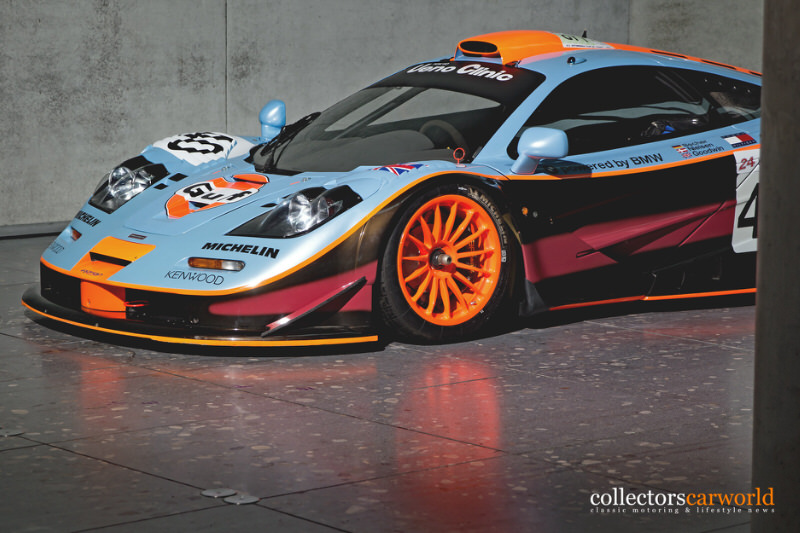
It was already a unique achievement when the F1 GTR, a thinly disguised road car, dominated its class for nearly two seasons and won at Le Mans. In this modern era, a repeat is even less likely. The exploits on the track have contributed further to the absolutely legendary status of the F1 road car. With its historic Le Mans victory, the McLaren F1 GTR brought back memories of a long bygone time when the racing cars could be drive to the race on the road. Ray Bellm proved this point by using his GTR for his trip to Le Mans in 1997, crossing the English Channel with the car on the train. McLaren and F1 experts Lanzante have since made many of the other GTRs road legal by, among other things, raising the ride-hide, removing the restrictors and adding catalytic converter.
Find out more on ultimatecarpage.com
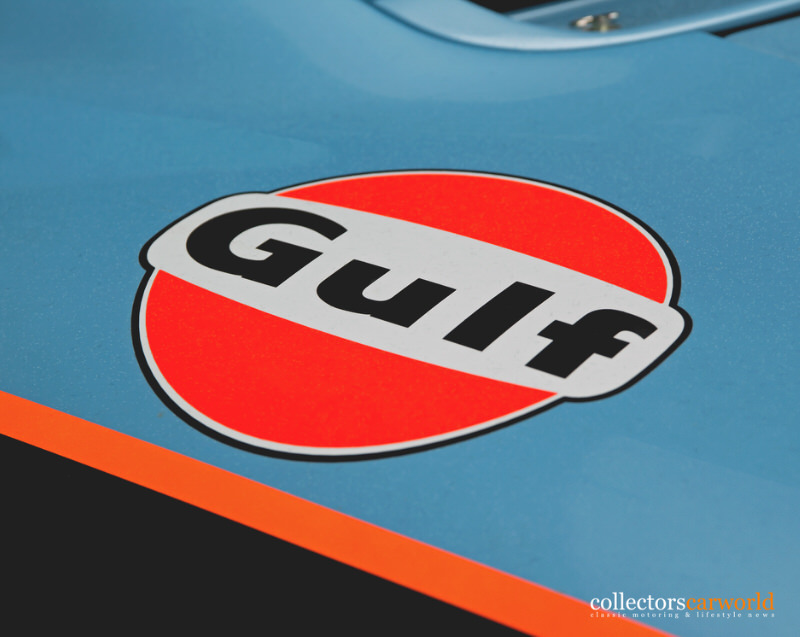
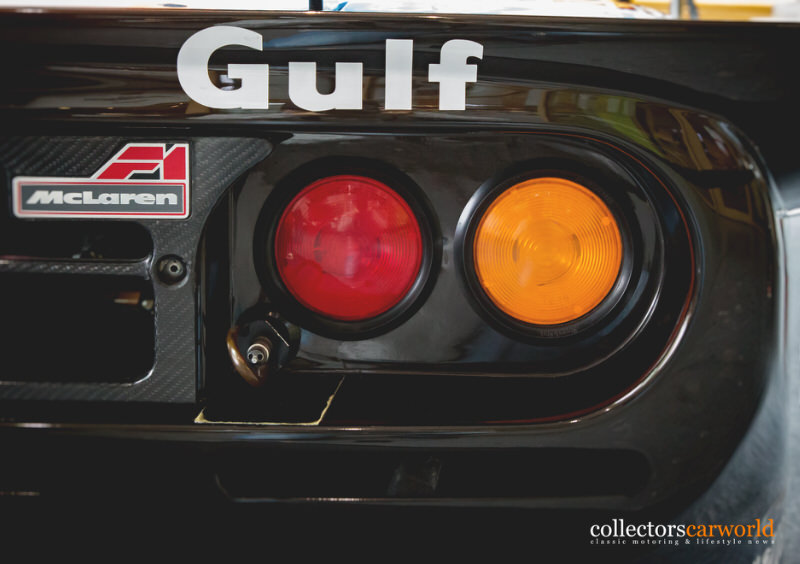
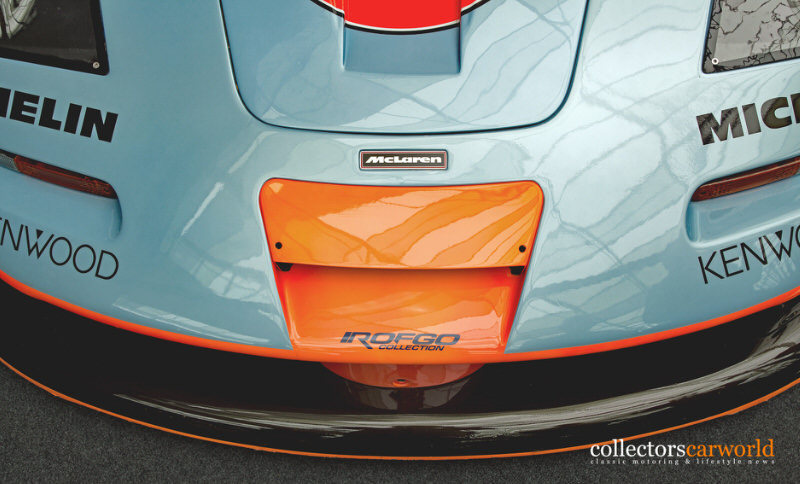

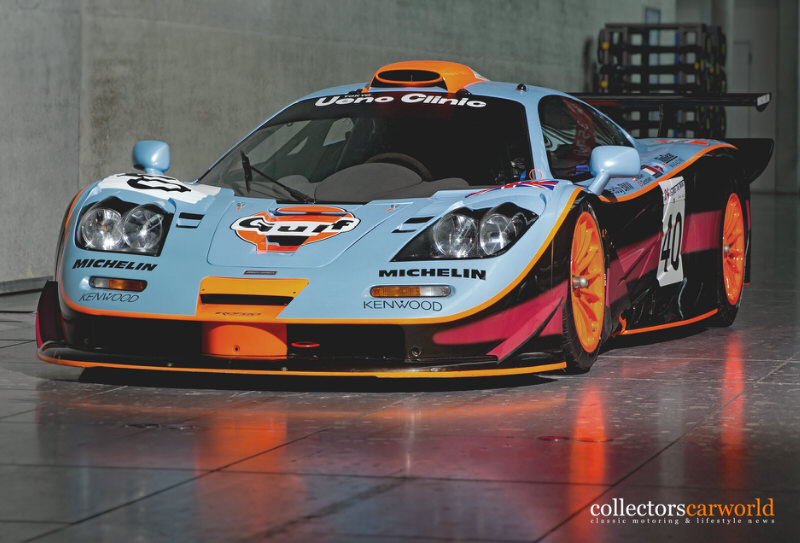

About our photographer Rainer Selzer
Rainer Selzer is always ready for a big shot and is focused on historic motorsport.
He is working with us for over three years and visits motorsport events, classic car meetings or car museums. Follow him on instagram @rs65photos or visit his homepage www.rs65photos.com for more!
Report by Wouter Melissen for ultimatecarpage.com
Photos by rs65photos.com


